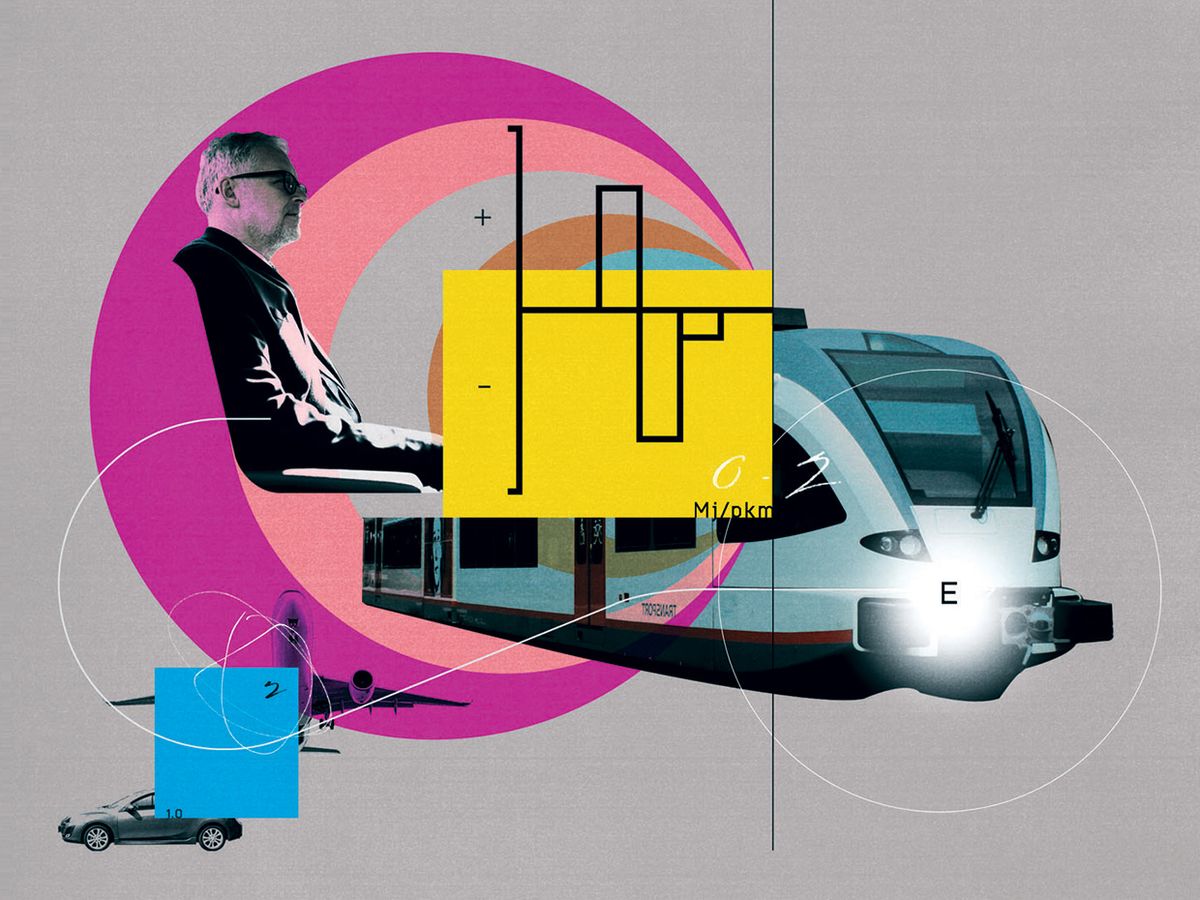I have no animosity toward cars and planes. For decades I have depended for local travel on a succession of reliable Honda Civics, and for years I have flown intercontinentally at least 100,000 miles annually. At these two extremes—a drive to an Italian food store, a flight from Winnipeg to Tokyo—cars and planes rule.
Energy intensity is the key. When I’m the only passenger in my Civic, it requires about 2 megajoules per passenger-kilometer in city driving. Add another passenger and that figure drops to 1 MJ/pkm, comparable to a half-empty bus. Jet airliners are surprisingly efficient, commonly requiring around 2 MJ/pkm. With full flights and the latest airplane designs, they can do it at less than 1.5 MJ/pkm. Of course, public-transit trains are far superior: At high passenger loads, the best subways need less than 0.1 MJ/pkm. But even in Tokyo, which has a dense network of lines, the nearest station may be more than a kilometer away, too far for many old people.
But none of these modes of transportation can equal the energy intensity of intercity high-speed trains. These are typically on routes of 150-600 km (about 90-370 miles). Older models of Japan’s pioneering bullet train, the shinkansen (“new main line”), had an energy intensity of around 0.35 MJ/pkm; more recent fast-train designs—the French TGV and German ICE—typically need just 0.2 MJ/pkm. That’s an order of magnitude less than airplanes.
No less important, high-speed trains are indeed fast. The Lyon-Marseille TGV covers 280 km (170 miles) in 100 minutes, downtown to downtown. In contrast, scheduled commercial flight time for about the same distance—300 km from New York’s LaGuardia Airport to Boston’s Logan Airport—is 70 minutes. Then you must add at least another 45 minutes for checking in, 45 minutes for the ride from Manhattan to LaGuardia, and 15 minutes for the ride from Logan to downtown Boston. That raises the total to 175 minutes.
In a rational world, one that valued convenience, time, low energy intensity and low carbon conversions, the high-speed electric train would always be the first choice for such distances. Europe is natural train country, and it has already made that decision. Yet even though the United States and Canada lack the population density to justify dense networks of such connections, they do have many city pairs that are suited for fast trains. But not one of those pairs has a fast train. Amtrak’s Acela line does not even remotely qualify, as it averages just a measly 110 km/h (68 mph).
There was a time when America had the best trains in the world. In 1934, 11 years after GE made its first diesel locomotive, the Chicago, Burlington & Quincy railroad began to run its streamlined stainless steel Pioneer Zephyr, a 600-horsepower (447-kilowatt), eight-cylinder, two-stroke diesel-electric unit. This power made it possible for the Zephyr to beat today’s Acela on its Boston–to–New York City run by hitting an average of 124 km/h on the more than 1,600-km-long run from Denver to Chicago.
Is it quite unrealistic to hope for a comeback? Could it be possible that a century later, in 2034, we might have sleek high-speed trains averaging close to 300 km/h between Boston and Washington, D.C., between San Francisco and Los Angeles, between Toronto and Montreal?
This article appears in the January 2019 print issue as “Energy Intensity of Passenger Travel.”
Vaclav Smil writes Numbers Don’t Lie, IEEE Spectrum's column devoted to the quantitative analysis of the material world. Smil does interdisciplinary research focused primarily on energy, technical innovation, environmental and population change, food and nutrition, and on historical aspects of these developments. He has published 40 books and nearly 500 papers on these topics. He is a distinguished professor emeritus at the University of Manitoba and a Fellow of the Royal Society of Canada (Science Academy). In 2010 he was named by Foreign Policy as one of the top 100 global thinkers, in 2013 he was appointed as a Member of the Order of Canada, and in 2015 he received an OPEC Award for research on energy. He has also worked as a consultant for many U.S., EU and international institutions, has been an invited speaker in more than 400 conferences and workshops and has lectured at many universities in North America, Europe, and Asia (particularly in Japan).


